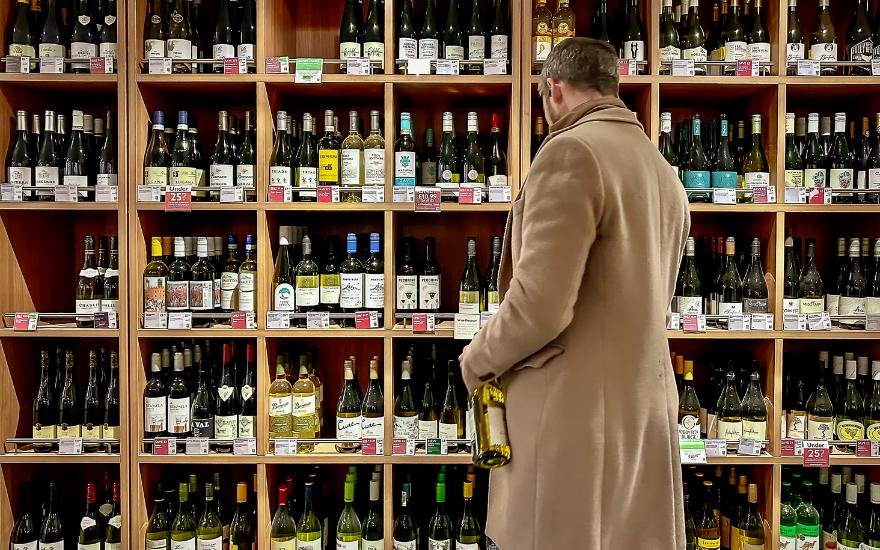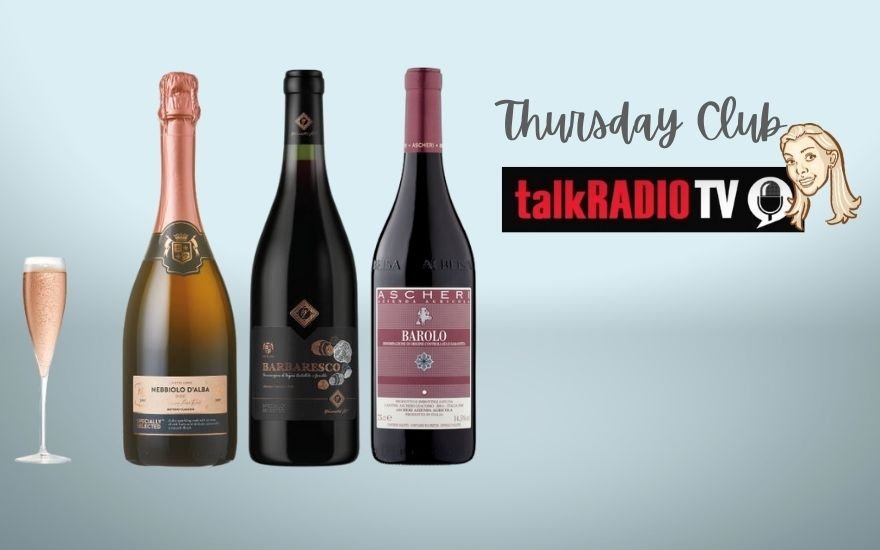Image credit: Will Wong
So many wines from around the world across price points - how do you pick your bottle or two, or even mix 3-6 with the seasonal and perpetual 25% off deals from supermarkets and High Street retailers? Do you buy wines weekly or keep some away for special occasions? With new wines appearing online and on the shelves all the time, how do you judge price vs quality and which wines are worth keeping?
For the UK retail market, the average spend on a bottle of wine is between £5 - £6.99. Say on a bottle of £6 wine, only 89p is attributed to the wine itself after excise duty, VAT, packaging, logistics and retail margin. Whilst on a £10 and £20 bottle before discounting, the actual value for the wine itself rises to £2.64 and £6.98 respectively. In other words, you get more wine for your money as you spend more per bottle. That does not mean a £20 bottle of wine is necessarily three times ‘better value for money’ than a £10 one though!
There is also a myth that wines improve over time. Yes and no. Red, white and sparkling wines all have different lifespans. As a ballpark, if you paid under £12 (before discounting) for a bottle of wine, perhaps it is not worth extended keeping. There are always exceptions.
Climate change and market conditions (global wine production in 2023 dropped by 10% from the previous year) add pressure on winemakers and producers to release wines for early consumption. Not many of us have the storage space at home for a cellar, or the intention to invest in the services of commercial storage specialists. It is therefore not surprising to see one UK leading supermarket’s own brand range with ‘Storage: It is recommended that this wine be consumed within 1 year of purchase.’ on the back label. Having said all that, some ‘fine’ or even everyday wines will reward us through patience, and a few common sense storage criteria (see below).
The eight wines below are for illustrative purposes, across generic categories and vintages. Accepting each wine is unique, we hope to inspire you through some general principles, in getting the most enjoyment from each bottle now and well into the future.
Image credit: Will Wong
Rosé
Most pink wines such as this Miraval Côtes de Provence are meant to be drunk young and fresh. Only keep your rosé in the fridge when ready to open. If stored correctly (see below), this could easily retain its crisp freshness for 2-3 years after purchase. Long gone is the perception that rosé is something you sip by the pool on holiday or only in the summer. Depending on individual wines, some rosé pair well with spicy food and the off-dry varieties stand up to fiery chilli.
Non-Vintage (NV) Champagne or Sparkling Wines
As a very general rule, drink Prosecco within a year of purchase. On the other hand, NV champagne (those without a year on the label) and sparkling wines such as the Balfour Hush Heath Estate Leslie’s Reserve made in the traditional method with secondary in-bottle fermentation deliver more complex flavours and greater intensity, which may well develop further over 1-5 years if stored properly.
Cava made in the traditional method mostly in Catalunya, when unopened and stored properly, can generally last 1-2 years past the expiration date stated on the label.
Reds to drink now
e.g. Beaujolais and Beaujolais Villages, Chianti, Rioja Crianza or other Tempranillo-based wines, and most wines under £12.
Much depends on the grape (inherent acidity and level of tannins in the skin) and also winemaking style. In general, most reds keep longer than still whites due to the tannins (think the slightly bitter and leathery feel from a cup of strong black tea). Even the traditional tannic Bordeaux and Burgundy fine reds are now more approachable when opened relatively young (e.g. vintages 2017/18).
Rioja (mostly Tempranillo) is a popular red from Spain. It has four ageing categories by law:
Joven: typically young and fruity, with no minimum ageing requirements and are typically released in the year following the vintage (the year in which the grapes were harvested);
Crianza: must be aged in oak barrels prior to release. These wines develop additional flavours such as vanilla, smoke and coconut;
Reserva: such as the above M&S No.21 Lomas del Marques 2015, must be aged for extended periods of time before release, both in oak barrels and in-bottle. The flavours are usually more pronounced and complex than a Crianza. The M&S Reserva 2015 was released in 2021, with a drinking window to 2025; so it is probably peaking now;
Gran Reserva: subject to the highest minimum ageing requirements and are reflected in their higher prices.
Due to the above ageing requirements, mature Spanish reds are often great value for money when released in the UK, if you prefer wines with greater depth and texture without having to wait another 5-10 years!
Below, we will show you a fine red that is worth keeping.
Whites to drink now
e.g. Pinot Grigio, Viognier / Condrieu, Sauvignon Blanc, Sancerre and Pouilly-Fumé, Vinho Verde, Albariño and other Galician whites; and most whites under £12.
In recent years, New Zealand Sauvignon Blanc from Marlborough have become the Darling Buds of May, or anytime anywhere. When young, they have that zesty acidity, grassy and asparagus nose with a lemony and sometimes flinty palate. It is rarely marketed as an age-worthy white, unlike the fine whites (chardonnay) from Burgundy such as Chablis Grand Cru or Puligny-Montrachet.
The above Cloudy Bay Sauvignon Blanc 2022 is regarded as one of the finest from Marlborough with a premium price tag. It is expected to keep up to five years. Nothing is absolute for wine. Far from being over the hill, a bottle of Yealands Reserve Sauvignon Blanc 2019 from Awatere Valley, Marlborough at less than half the price of the Cloudy Bay was still robust with fresh acidity and a long mineral finish when opened in April 2024.
We now turn our attention to four categories of wine you might like to keep, if you could resist the temptation.
Image credit: Will Wong
Fine Reds
e.g. most above £12 - Pinot Noir/Red Burgundy, Sangiovese such as Chianti Classico and Brunello di Montalcino, Grenache/Garnacha, southern Rhône reds such as Châteauneuf-du-Pape, Shiraz/Syrah and northern Rhône reds such as Côte-Rôtie and Hermitage, Merlot - Right-Bank Bordeaux, Cabernet Sauvignon - Left-Bank Bordeaux, and Nebbiolo - Barolo & Barbaresco.
The Penfolds Max’s Shiraz 2020 from Adelaide Hills, South Australia was released in 2022; retaining black fruit concentration with high acidity and firm tannins at a whopping 14.5% ABV. These elements together provide the in-bottle conditions to help the tannins soften over time, and develop further complexity till 2031. Of course you can open and drink it now, and it is probably more accessible than its Northern Rhône counterparts (Côte-Rôtie & Hermitage). Given Penfolds’ suggested drinking window, this fine Shiraz is still a baby that needs time to calm down.
Fine Whites
e.g. most above £12 - Rhône whites such as Hermitage Blanc, Chablis, Chardonnay, white Burgundy, Gewürztraminer, Chenin Blanc, Semillon, Riesling.
Less famous than Chardonnay or Sauvignon Blanc, and not the most widely grown; Riesling is often hailed as the noble grape by wine professionals, but not consumers who often associate it with German sweet wines with low alcohol. Occasional indecipherable labels in only German do not help either.
Unlike Sauvignon Blanc, Riesling is renowned for its capacity to develop for years, even decades in bottle. As an aromatic grape varietal, Riesling does not need high alcohol to be made into a variety of wines from dry to off-dry, medium and sweet, and from light to full in body
Yet, if you were to taste a fruity and light Riesling from Mosel, Germany, usually between 8-10% ABV, side by side with a bone dry version at 13% ABV from the Clare or Eden Valley in South Australia, they could not be more different. Other fine Rieslings are also produced in Alsace and Austria; such as the Rabl Schenkenbichl Riesling Reserve 2018 (13% ABV) drinking to 2026 at least.
Vintage Champagne or Sparkling Wines
If you look closely at the above Hattingley Blanc de Blancs 2014 from Hampshire England, it clearly states ‘Traditional Method Brut’ Vintage 2014. In exceptional years, a portion of the best grapes are used to create a Vintage Champagne or Sparkling Wine. ‘Brut’ usually denotes dry due to the high acidity and lively dissolved bubbles in the wine.
2014 was an exceptional year for some of the finest parcels of Hampshire Chardonnay that were used in creating this Blanc de Blancs (100% Chardonnay). 13% of the wine was fermented in old oak barrels to add a creamy and toasty texture to the palate. Ageing on lees for over five years added further complexity. It was only disgorged in March 2020 and released in 2021. This costly and laborious winemaking method produces fine sparkling wine in small quantities commanding very high prices.
High quality vintage champagne or sparkling wines should keep for 2-10 years after release, not the vintage year.
Sweet Wines
There are different styles of sweet wines such as the Canadian Icewine and German Eiswein made with frozen grapes. Other famous varieties such as Sauternes and the Hungarian Tokaji Aszú are made from ripe grapes affected by Botrytis (Noble Rot), a fungus that causes the water in the grapes to evaporate, resulting in high concentration of acids, sugars and flavours which are essential to produce premium sweet wines.
This Disznókõ Tokaji Aszú 2017 is made mainly from Furmint, an indigenous Hungarian grape with natural high acidity very susceptible to botrytis. Tokaji Aszú spends a significant time ageing in oak, giving a balance of intense stone fruits (apricots), citrus fruits with vanilla and smoke, and aromas of dried fruit, caramel and nuts. The sweetness and full-body are balanced by high acidity with a long and intense finish. It is a treat with blue cheese, desserts, foie gras or on its own. The 2017 vintage will continue to develop complex flavours for up to 20 years in the bottle.
How should I store my wines?
Wine is a fragile living thing. Temperature fluctuations and strong direct light are combo killers; so a kitchen wine rack is definitely out. They need a consistent temperature, ideally around 13ºC but anywhere between 10-20ºC is acceptable; so avoid proximity to fireplaces or central heating radiators.
Avoid placing your wines, especially sparkling wines near direct natural or artificial light.
With cork closure, it’s best to store the bottles on their side in a cool, dry and dark place. Screwcaps can be placed upright.
How long should I keep my wines?
Image credit: Will Wong
As you may have probably realised by now, this is a very difficult question besides the above general guidelines. With fine wines, it might be worth buying 3-12 wines of the same vintage if you have the space, patience and budget to open one periodically. This is a luxury and pleasure in being able to chart your favourite wine’s journey in your home.
Fortunately, help is at hand via a little annual wine bible: Hugh Johnson’s Pocket Wine Book (Ed. Margaret Rand) published since 1977. Besides the quick vintage charts as seen above, this little gem lists leading producers from Austria to Uruguay; with special emphasis on Bordeaux producers’ best vintages and their readiness to drink. It is indispensable as an up-to-date succinct reference source.
Last but not least, wines are to be drunk. More and more wines are now made to be consumed sooner rather than later. Having the patience and space to store wines properly is likely to be rewarded. But as Margaret Rand put it, some of these laid down wines might outlive you. It depends on how much you like your heirs.
By Will Wong







